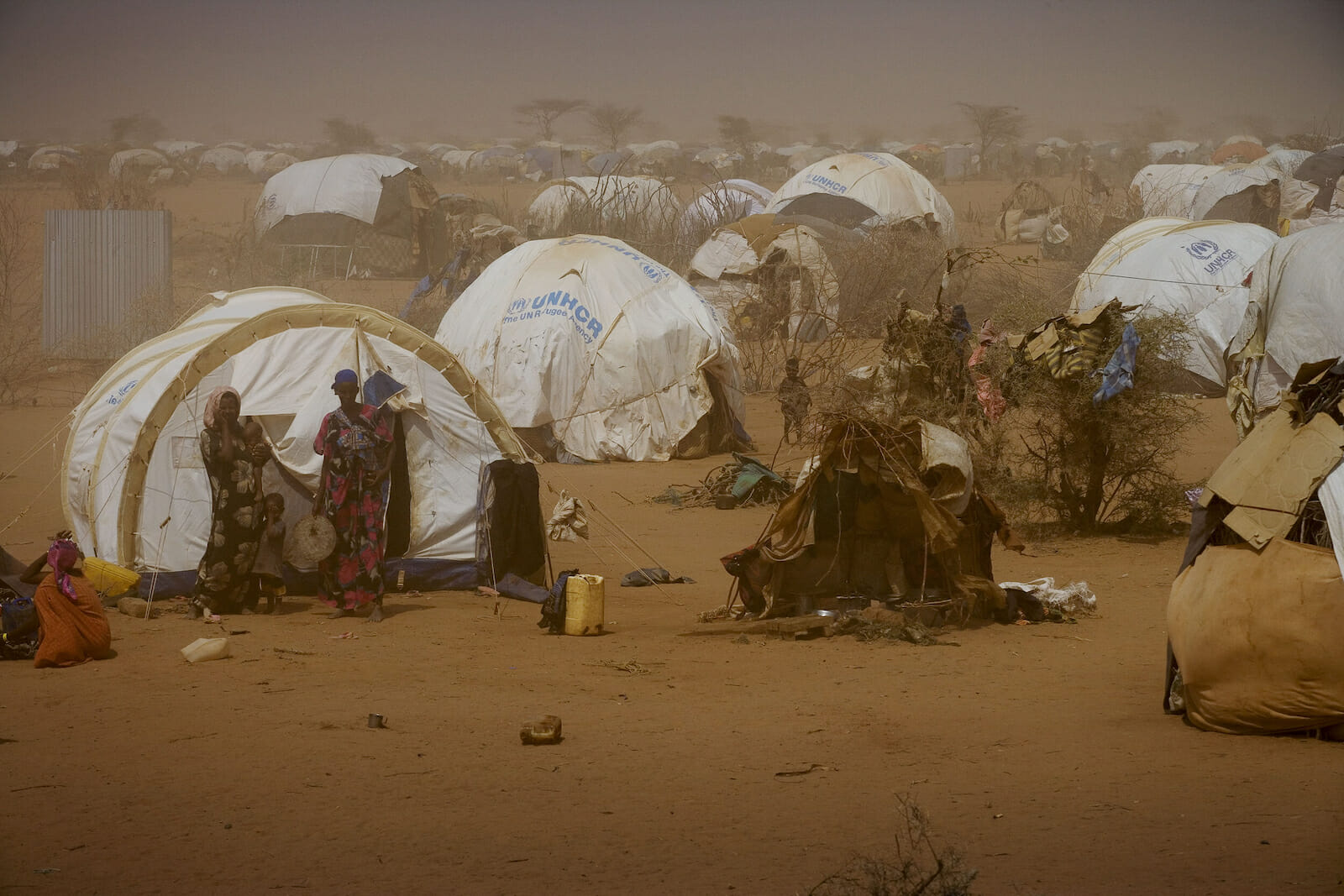
Bearing the Cost: 30 Years of Dadaab
The world is facing a refugee crisis, and some countries are bearing the burden more than others. According to statistics from the UN High Commissioner for Refugees, Kenya hosts 218,873 asylum seekers and refugees from the DRC, Eritrea, Burundi, and Rwanda. A significant number of the refugees and asylum seekers are from Somalia which has remained unstable and risky for refugees to return home.
Between 1991 and the present, over 5 million Somali refugees have passed through Kenyan refugee camps before leaving for Europe, North America, or assimilating in Kenya. Well-known figures that have been housed in the Dadaab refugee complex, a series of refugee camps, include Minnesota Congresswoman Ilhan Omar, who recalls her days there as a young girl before seeking asylum in the U.S., and supermodel Halima Aden, who in an interview shared that if it wasn’t for Dadaab, she would have never gotten the opportunity to dream that a woman with a hijab could grace international magazine covers. The list is endless: over 5 million lives supported, protected, and nurtured over the past three decades. This does not include Somali-Kenyans who have been characterized as Kenya’s 6th largest tribe. The bonds and relationships between the two states are undeniable and intricate.
However morally right it is to host so many refugees in need, it does come at a price in terms of financial strain and resources. For a host nation, a condition referred to as asylum compassion fatigue is also common, a side effect of an immigration crisis that shows no signs of winding down. It was thus not a surprise when in 2016 the Kenyan government after years of deliberation decided to explore the closing of the Dadaab camps, and disband the Department for Refugee Affairs (DRA) which would significantly impact the overall operational environment at Dadaab. At the time, Kenya cited security, environmental and economic burdens as the reason for this decision eliciting backlash from many humanitarian organizations, but applause from Kenyans who feel taken for granted.
Hosting these vulnerable populations, including women and children, brings with it significant costs. The Kenyan government has had to incur substantial costs such as the deployment of security personnel, officials to handle health and education services, not to mention environmental degradation that is the result of hosting so many hundreds of thousands of people in an area that wasn’t designed for that purpose.

Motivated by the need to resolve the unending crisis, Kenya has been involved in peace processes and political negotiations in both Somalia and South Sudan. In Somalia, for example, the peace process dates back to 2002 with the Eldoret conference and another in 2004 that established a national government. Kenya was also heavily invested in the South Sudan peace process in 2005. In South Sudan, where civil war broke out in 1983, Kenya was an important logistics and operations hub for Operation Lifeline Sudan dating back to 1989.
In Somalia, there has been a constant shifting of goalposts by various players that has made it hard for refugees to return home. A refugee expert shared in detail that South Sudan, while not perfect, has made huge strides in trying to repatriate South Sudanese refugees back home.
Few Kenyans benefit from local employment, with a majority of jobs being taken up by refugees and non-locals. Furthermore, despite thriving businesses inside these camps, these enterprises do not pay taxes to local or regional governments.
The level of insecurity in these camps has also been a concern, with Kenyan authorities saying Dadaab has become a security nightmare. In many instances, a surge in refugees has at times coincided with an increase in illegal firearms and criminality in the region including cattle rustling, rape, and violence. Following a terror attack in 2019, Kenyan officials traced some of the suspects to the Dadaab camp.
In urban centers like Nairobi where an estimated 100,000 refugees reside, the surge in refugees has coincided with price hikes and a housing crunch that has had an ancillary effect of putting Kenyans out of work and making some homeless. This has had the effect of turning Kenyans against refugees and creating in some cases a hostile environment.
Going forward, Kenya must rethink its refugee strategy to fulfill its humanitarian obligations while also being compensated for its efforts. Countries such as Turkey have benefited from hosting refugee populations with financial assistance from the EU. Secondly, the country must double its efforts to ensure political stability in both South Sudan and Somalia. Lastly, the world must come together to find answers and force an end to known factors that have led to instability in the region and caused the creation of Dadaab in the first place.

